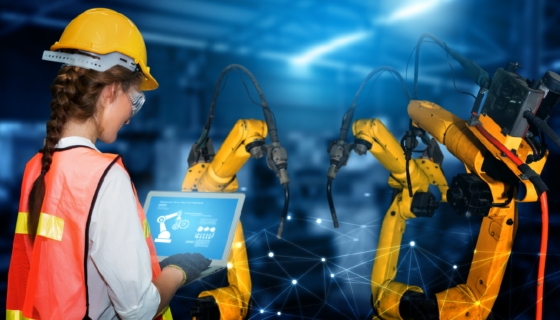The 3 Pillars of Manufacturing: Anticipation, Innovation, Collaboration
Disruptive digital technology will transform every industry in one way or another. The manufacturing sector is absolutely no exception, having spent the last decade bouncing back from being affected by a down economy.
Yet despite the coronavirus pandemic throwing a wrench in what was poised to be one of the best economic years in recent history, the manufacturing industry is still steadily rising thanks to a multitude of technological advances, and there is plenty more innovation to come.
Whether you are a leader or an employee in manufacturing, it is imperative you implement my Anticipatory Leader System - which in this case focuses on the Hard Trends affecting the manufacturing sector both inside and out - in order to pre-solve problems that can come with those Hard Trends and turn disruption and change into opportunity and advantage.
Next-Generation Manufacturing Principles
In the last decade, manufacturing in the United States faced intense international competition, increasing market volatility and complexity, a declining workforce, and a host of other challenges.
But the industry overcame said obstacles not only by adopting new technology but by applying Next-Generation Manufacturing Principles I have discussed in the past.
First, the industry anticipated customer needs, which in its own way was manufacturers focusing on those aforementioned Hard Trends - or future certainties - from my Anticipatory Leader System. Having been able to see both needs and opportunities before they happen, manufacturers then were able to innovate around their core competencies, and more frequently.
In order to increase innovation, a focus on collaboration rather than cooperation was needed, using a mindset based on abundance while incorporating both your employees and competitors in the innovation process. Any problems that arose during innovation were pre-solved by again using those same Hard Trends to determine what was solvable before it became a bigger issue. From there, manufacturers communicated the strategies they developed.
Finally, de-commoditization was key in getting us to where we are headed today in manufacturing, adding value creatively to a product or service in order to increase margins.
Industry 4.0: Manufacturing and Digital Technology
Although the manufacturing sector has risen from the ashes of where it was by way of those six principles, that does not mean that companies can now rest on their laurels with a wait-and-see mentality, especially into this post-pandemic "new normal" we are anticipating.
There are specific technological advancements in our world today that have already made themselves known in other industries; however, without question, they are weaving their way into the world of manufacturing just as quickly, redefining the manufacturing sector with the term "Industry 4.0."
Defined as "smart factories," the "4.0" of Industry 4.0 is representative of the "fourth-generation industrial revolution" in which the industry adapts several different technological advancements to become more streamlined and, most importantly, continuously innovative.
Here are a few advancements to be aware of that will only increase their disruption as part of the Industry 4.0 future:
Artificial Intelligence (AI)
Coupled with 5G connectivity and machine learning, Artificial Intelligence (AI) will be one of the biggest transformations the manufacturing sector will see. This level of technology is already transforming inventory management and supply chain visibility while simultaneously reducing warehouse costs and improving forecast accuracy.
While this does not mean a sentient robotic being will replace jobs, it does refer to a computer system that has the capability to recognize trends and interpret logical solutions to help human individuals in the manufacturing sector do their jobs better by providing them with the ability to make data-driven decisions.
Internet of Things (IoT)
The Internet of Things (IoT) is improved also by low latency connectivity provided to us by 5G networks, allowing manufacturing companies to monitor in real-time how their operations are going. This includes, but is not limited to, safety measures on the manufacturing floor, streamlining processes, and saving money.
These insights were never before as easily accessible as they are today, allowing organizations access to valuable data to help them change or optimize areas internally and, as mentioned above, pre-solve problems before they become catastrophic disruptions.
Virtual Reality (VR)
Virtual Reality (VR) headsets are commonly marketed and perceived as strictly gaming technology; however, there is a ton to be done in the way of gamifying manufacturing training and even the future of working remotely in manufacturing.
Let's suppose you need to train a new sales employee on how to use a device still in production; what would be the most engaging, hands-on way to do so without having the person physically use it? Implementing an immersive experience of it using VR technology would be a more interactive, gamified way to do so, rather than having him or her sit and memorize a user manual from cover to cover.
Stay Anticipatory to Stay Ahead
An important way for the manufacturing sector to continue on its upward trajectory, even following COVID-19, is to implement my Anticipatory Organization Model, which calls you to pay attention to those above Hard Trend technological advancements - future certainties that are currently happening - and pre-solve any problems they may bring to your workforce.
With automation becoming a dominating Hard Trend as well, always be sure to work with the technology afforded to us by the Three Digital Accelerators - computing power/processing power, bandwidth, and storage - and become a positive disruptor in the industry as opposed to the disrupted.










